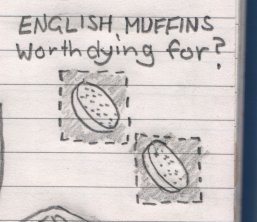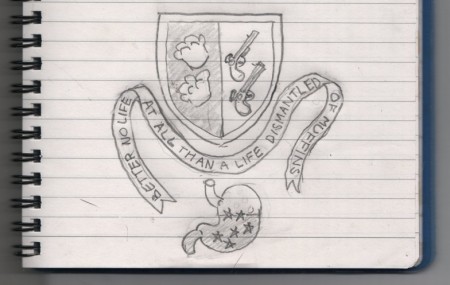Category Archives: Heraldic Muffin Devices
Print, Snip, ‘n’ Gum
At the risk of this becoming a muffincentric website, I think it is important that readers are given the fruits of Glyn Webster’s tireless – if no doubt tiring – researches into what the OED defines as a small, flat, cake made from yeast batter and cooked on a hotplate, usually eaten split, toasted, and spread with butter, jam, etc., esp. for breakfast or tea. Interestingly, in the dictionary’s first citation, from 1703, it is spelled Moofin, and in the second, from 1747, Muffing (capitalisation in the originals). I wonder if it is too late to beat against the tides of history and to reintroduce one or other of these spellings?
Anyway, the only reason I have returned to this possibly inexhaustible topic is that, having apprised himself of the difference between true Moofins and what the rest of the world outside Britain think is a Muffing, Mr Webster has kindly provided these cut-out “patches†or “plug-ins†for your heraldic muffin device. Just print, snip, ‘n’ gum!

Â
Heraldic Muffin Device
Far away in the Antipodes, Glyn Webster has been pondering the terrible choice the lieutenant-colonel had to make between the muffins, on one side of his breakfast table, and the loaded pistols on the other. The result of Mr Webster’s exercising of his cranial integuments is this splendid heraldic device:

I pointed out to Mr Webster that the muffins shown were unlikely to be the type of muffins which caused the lieutenant-colonel his dyspeptic atrocities. When you print out the device – and note I say “whenâ€, not “if†– you may use Tippexâ„¢ and a pencil to adjust the muffins to your preferred muffin-type should you so desire. But remember the religious ruling which states “uncertainty of muffin-type is no great sinâ€.
Incidentally, Mr Webster has been reading Zoonomia by Erasmus Darwin, and has found “many alarming stories about pistolsâ€, but not the one involving the lieutenant-colonel and his muffins. Was De Quincey making it up?
